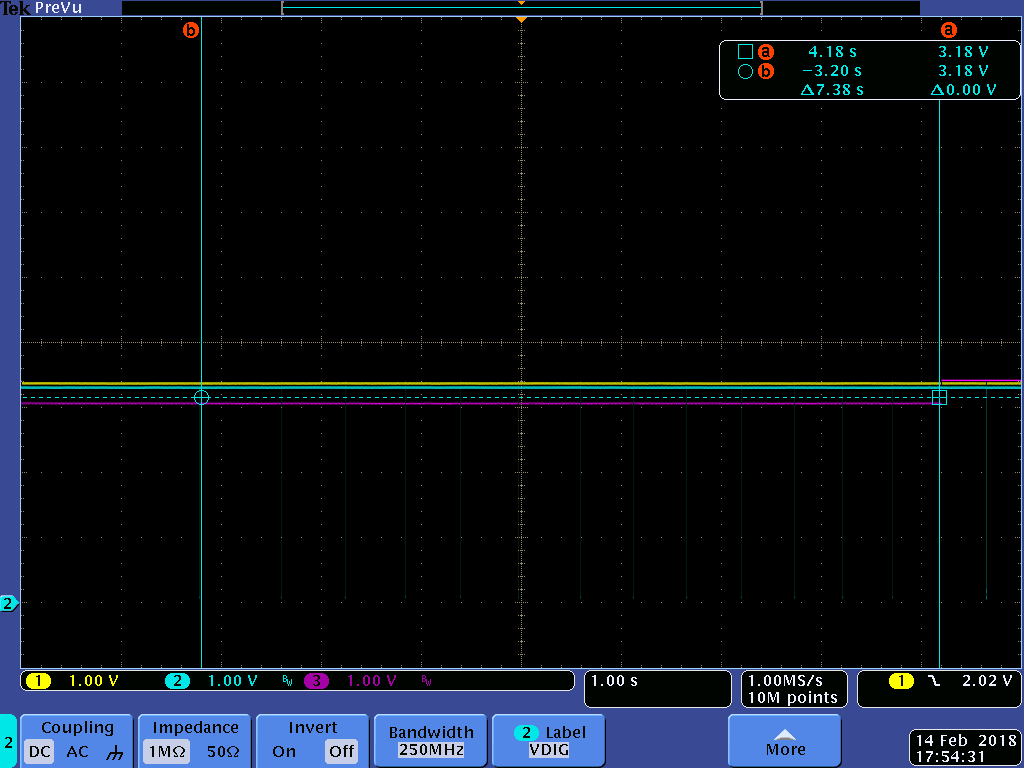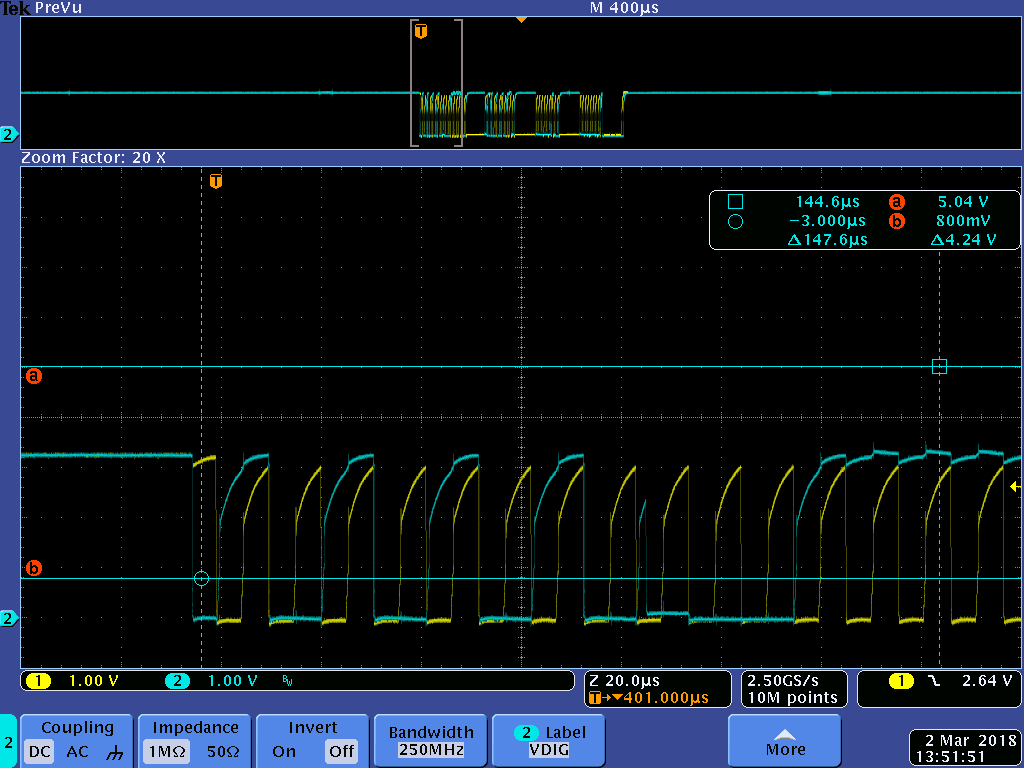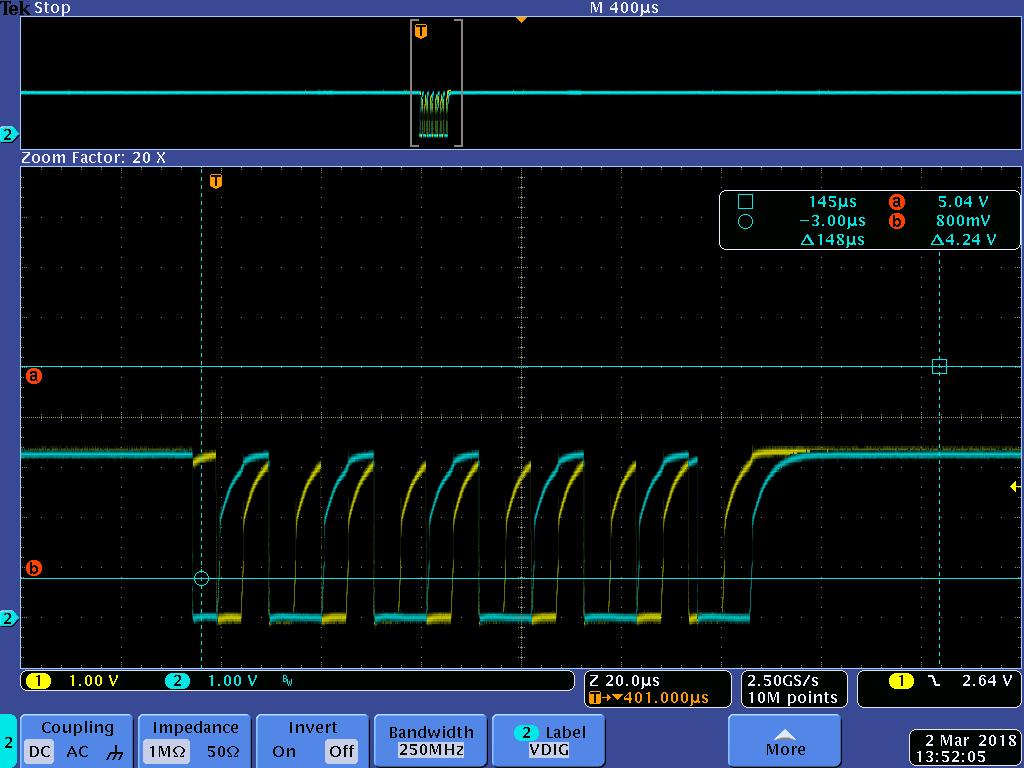Other Parts Discussed in Thread: BQSTUDIO, EV2400
I have a design with the bq28z610 part configured for 1s operation where the CHG FET turns off when the device enters SLEEP mode.
The pack is configured to wake on successful I2C comms and then return to sleep after 30s of no comms. This seems to work fine. Although, sometimes the first transaction on wake is hit or miss if it is a command write.
The pack is also configured to wake on current comparator around 200mA. I'd set it lower if I could, but this is at the lowest setting for the sense resistor used.
When I attempt to "wake" the pack via discharge (because the CHG FET is off), at a low current, the CHG FET turns on (after ~2s) and the voltage increases which I assume is the CHG FET diode protection feature.
When discharge is removed, the CHG FET turns off in ~2s. I assume the internal state is still "SLEEP". This seems like the expected behavior. IFF I switch to charge fast enough, I can charge the pack.
When I attempt to "wake" the pack via discharge above the wake comparator threshold, the CHG FET turns on (almost instantly) and the voltage increases which I assume is "wake via current".
When discharge is removed, the CHG FET turns off in ~2s. I assume the internal state is "ACTIVE".
Is this the correct operation? My question is related to the last state above: Can I increase the time in "ACTIVE" to match the communications timeout? 2s is too short for our ATE to switch from DSG to CHG reliably and it does not have communications capabilities. I cannot find any settings to set this time. I was hopeful that it was based of off average current or that it would use the comm timeout, but that does not appear to be the case. Please advise.




